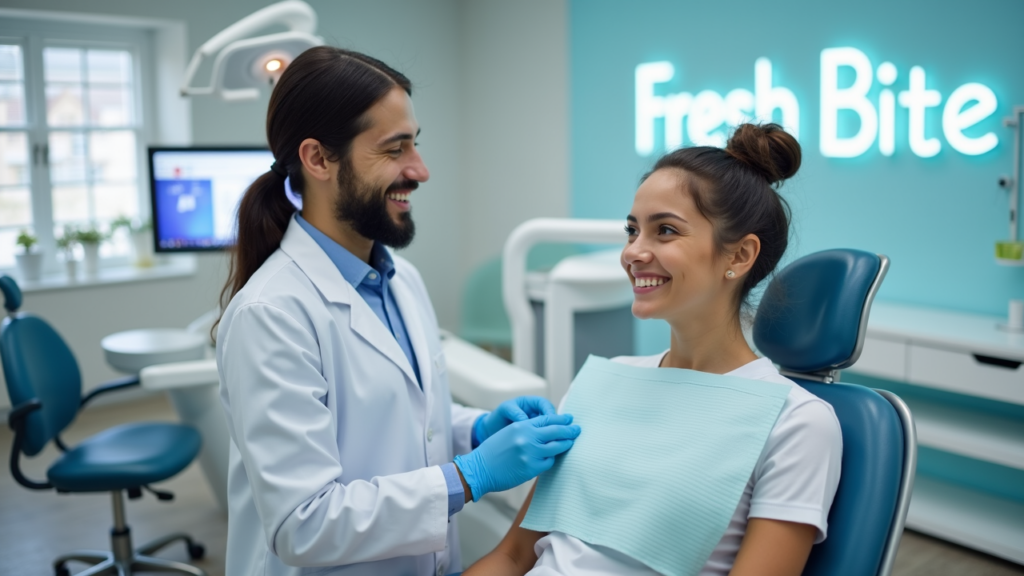The Future of Teeth Whitening: Emerging Trends and Innovations
In recent years, the quest for a brighter smile has transformed teeth whitening from a cosmetic luxury into a routine necessity for many. As technology advances, so too does the array of options available for those seeking to enhance their dental aesthetics. The future of teeth whitening is poised to be driven by groundbreaking innovations, ensuring that methods become safer, faster, and more effective.

Current Landscape
Today, teeth whitening procedures can be broadly categorized into two types: in-office treatments and at-home products. In-office treatments, typically performed by dental professionals, use high concentrations of bleaching agents like hydrogen peroxide or carbamide peroxide. These treatments are effective but can be costly and occasionally lead to tooth sensitivity or gum irritation.
At-home products, on the other hand, include over-the-counter strips, gels, and whitening toothpastes. These products offer convenience and affordability but often require prolonged use to achieve noticeable results and carry risks if not used as directed.
Technological Innovations
Emerging technologies are set to revolutionize how we approach teeth whitening, focusing on efficiency and minimizing discomfort. One of the most promising advancements is the development of LED technology. LED (light-emitting diode) lights are used to accelerate the bleaching process by activating the whitening agent more quickly than traditional methods. This technology not only shortens treatment time but also reduces the risk of sensitivity post-treatment.
Another innovative approach is the integration of nanotechnology in teeth whitening solutions. Researchers are experimenting with nanoparticles to improve the delivery and effectiveness of whitening agents directly to the enamel, enhancing the penetration without damaging the tooth structure. This method promises a deeper, more lasting whiteness while maintaining tooth integrity.
Natural and Holistic Options
As consumer preferences shift towards natural and organic products, the teeth whitening industry is responding with alternatives that use less harsh chemicals. Ingredients such as activated charcoal, coconut oil, and baking soda are gaining popularity due to their natural whitening properties and perceived safety profile compared to conventional bleaching agents.
Furthermore, there is growing interest in holistic dental practices that consider the health of the entire body. These practices often recommend dietary changes that can naturally prevent staining and promote oral health, such as increasing the intake of raw fruits and vegetables while avoiding highly pigmented foods and beverages.
Customization Through AI and Machine Learning
Artificial intelligence (AI) is beginning to play a significant role in cosmetic dentistry, including teeth whitening. AI algorithms can analyze individual dental records and images to predict treatment outcomes for different methods, allowing for highly customized treatment plans. This tailored approach helps in achieving optimal results while minimizing unnecessary exposure to bleaching agents.
Machine learning can also assist in monitoring the progress of teeth whitening treatments in real-time, providing adjustments to protocols based on immediate feedback from ongoing sessions. This dynamic customization not only enhances effectiveness but also improves user satisfaction by delivering predictable and desirable outcomes.
Regulatory and Environmental Considerations
As innovations continue to surface, regulatory bodies are tasked with ensuring these new methods meet safety standards before they reach consumers. Additionally, environmental concerns over disposable plastics used in many at-home whitening kits are prompting companies to develop more sustainable packaging options.
Biodegradable trays and recyclable materials are beginning to replace traditional plastics in an effort to reduce the ecological footprint of dental products. Moreover, manufacturers are being encouraged to formulate products that minimize harmful waste without compromising on efficacy.
Conclusion
The future of teeth whitening looks bright with numerous innovations on the horizon aimed at improving safety, effectiveness, and consumer satisfaction. From technological advancements like LED lights and nanotechnology to natural remedies and AI-driven customization, these emerging trends promise to transform teeth whitening into a more accessible, personalized dental care experience.
As we continue to embrace these innovations, it remains crucial for consumers to stay informed about the options available while considering their personal needs and values—especially when it comes to health implications and environmental impact. With ongoing research and development within this dynamic field, achieving a dazzling smile will soon be easier than ever before—signifying a new era in cosmetic dentistry that is smarter, faster, and kinder.
Need More Information?


Innovations in Cosmetic Dentistry: What’s Next for Perfect Smiles?
Innovations in Cosmetic Dentistry: What’s Next for Perfect Smiles? In recent years,…

The Integral Role of Nutrition in Oral Health and Natural Teeth Whitening
The Integral Role of Nutrition in Oral Health and Natural Teeth Whitening…

Transforming Smiles
Transforming Smiles, Transforming Lives: The Art of Smile Makeover Specialists In a…

